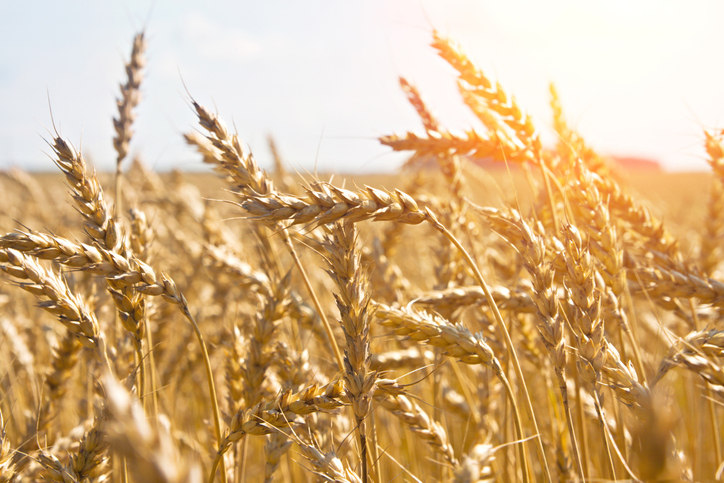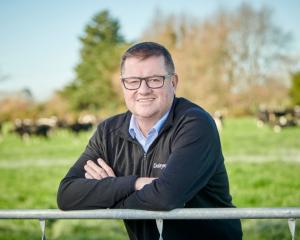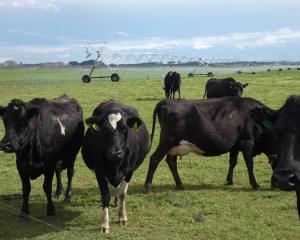
Canterbury grows most of NZ's wheat, barley and oat crops. But persistently low wheat prices, coupled with a high milk payout, are believed to be driving farmers out of the industry in search of dairy dollars.
Canterbury's regional council said up to 25,000 more dairy cows could be added to the region's herd this year, following an end to a temporary ban on intensive dairy farm conversions.
Environment Canterbury kept data on new dairy discharge consents as a proxy for conversions, which showed there were 32 new consents approved this year, and 15 more in progress.
It said the maximum number of cows that could be milked through the shed was 25,818 cows, among the approved consents.
Federated Farmers' arable group chairman, David Birkett, said around half of those 32 consents would likely be arable farmers converting at least part of the farm into dairy.
"A number of arable farmers have gone down that path and are converting arable farms to dairy," Birkett said.

"It's a two-sided sword. I guess one, it tugs people out of the arable industry, which means there are less growers. But it also means that are we losing the critical mass of the industry?"
He said the arable industry required a lot of infrastructure collectively, including drying machinery.
"Do we get to a point where that infrastructure can't be supported because we don't have the critical mass of the number of growers?
"We're not at that point yet, but I guess we're as we lose growers, we are getting closer to that point."
The Leeston farmer integrated sheep into his own cropping farming system to diversify income, and said strong meat prices were a "godsend".
"Most people we think are around that break-even point, but a lot of that additional income has probably come from the livestock that they've had on farm."
The lobby group's latest twice-annual farmer confidence survey in July found that general confidence soared to its highest level in more than a decade.
Eighty-one percent of dairy farmers surveyed were making a profit, versus just one percent making a loss.
However, for arable, 40 percent were making a profit, while 29 percent were making a loss.
This week, Fonterra dropped their farmgate milk payout price forecast for the current season to $9.50 per kilogram of milk solids from $10.
Despite the drop though, dairy could still be considered a strong industry to be in with DairyNZ's breakeven forecast sitting at $8.68.
 For arable farms, 40 percent were making a profit, while 29 percent were making a loss. Photo: File image
Dairy cow numbers peaked a decade ago
For arable farms, 40 percent were making a profit, while 29 percent were making a loss. Photo: File image
Dairy cow numbers peaked a decade ago

The number of dairy cows nationwide dropped 0.5 percent in 2024/25 over the season to 4.68 million, that's about 2 percent below the five-year average of 4.75 million, according to DairyNZ's latest census of the dairy herd.
Meanwhile, milk solids production was up 2.9 percent.
New Zealand's dairy cow numbers peaked in 2014/2015 at $5.02 million.
Just over 20 percent of the country's dairy cow population were found in North and South Canterbury alone, at 940,583 cattle collectively.
Compared to the North Island, herd sizes were much larger in the South Island, covering 30 percent of the total dairy herds but 43 percent of the cow population.
What's behind the temporary ban?
Legislation introduced in 2020 sought to temporarily restrict the expansion of intensive dairy farming, through the National Environmental Standards for Freshwater under the Resource Management Act (RMA).
It was expected that regional councils would introduce new freshwater plans or change existing plans before the dairy conversion moratorium expired in January, ECan said.
But in July, all plan changes were halted by the government in efforts RMA Reform Minister Chris Bishop said would "stop councils wasting their officers' time and their ratepayers' money on", ahead of an overhaul to the RMA.
Henceforth, consents were no longer required for land use change to dairy, however, they were required for animal effluent discharge.
Legislation replacing the RMA was expected to be introduced to parliament in the next couple of weeks.













